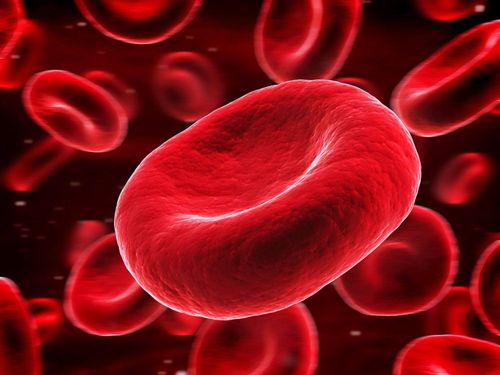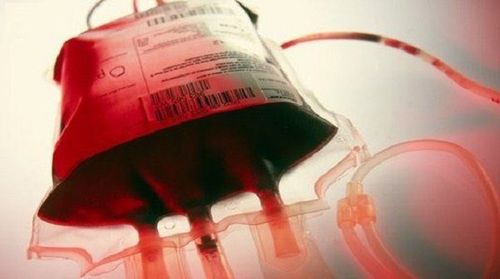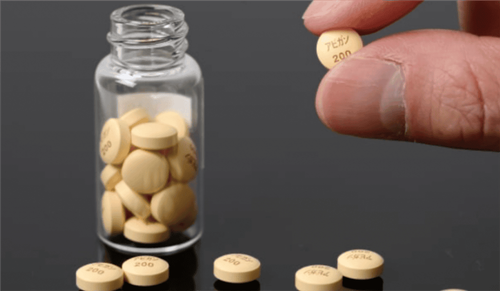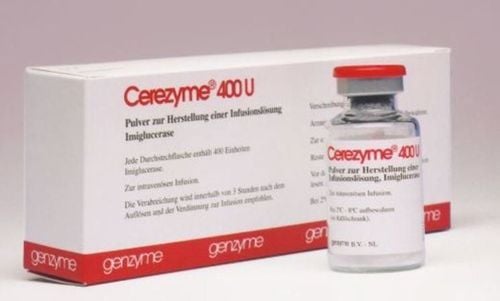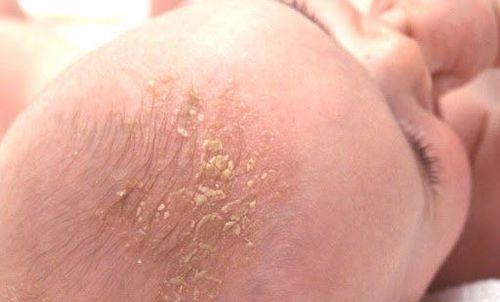This is an automatically translated article.
Blood is a very special biological product. The amount of blood available today is still completely collected from blood donors. From there, the blood will be prepared into different blood products, with appropriate indications for use in each patient's condition.1. Whole Health
Whole blood is obtained from a blood donor who has been selected according to regulations and is not subject to delay in blood donation. These whole blood units must have a safe result with screening tests for blood-borne infections and blood grouping.After being collected from blood donors and performing some necessary tests, if satisfactory, whole blood units are packaged, numbered and stored, without further processing. any reason.
When stored at a temperature between 2 degrees C and 6 degrees C, the shelf life of whole blood does not exceed 35 days. However, when stored at room temperature from 20 degrees C to 24 degrees C, the shelf life of whole blood does not exceed 24 hours.
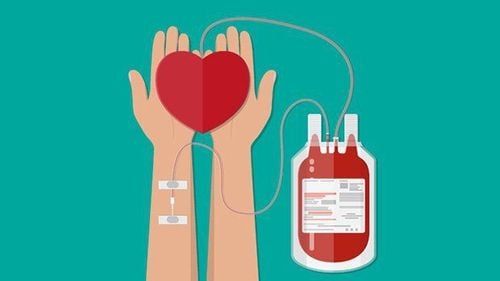
Máu toàn phần được lấy từ người hiến máu khi đủ điều kiện sức khoẻ để hiến máu.
2. Products from red blood cells
2.1. Sedimentation of red blood cells After collection of blood collected from a donor, whole blood is centrifuged or left to settle, resulting in bilayer formation. The clear supernatant is plasma, which is separated to make fresh frozen plasma or to prepare coagulation factors. The remainder that settles to the bottom is deposited erythrocytes, also known as erythrocyte concentrates.Although it is bright red, red blood cells are a mixture of all blood cells, including white blood cells and platelets. However, since the plasma has been separated, the actual volume of one unit of erythrocyte sedimentation is now only about 60% (15% error) of the original whole blood volume of the same unit. head. However, the minimum amount of hemoglobin is still guaranteed to be 10g from every 100ml of whole blood prepared. At the same time, the percentage of hematocrit tends to be more "concentrated", increasing to 65 to 75% while the percentage in normal human blood is only 40 to 45%.
After preparation from whole blood, erythrocytes should be stored in a suitable medium. The required condition is a temperature between 2 degrees Celsius and 6 degrees Celsius. Only when this is the case, the shelf life of red blood cells can be up to 35 days.
2.2. Red blood cell block with preservative solution Red blood cell block with preservative solution, which is a concentrated red blood cell mass, but with an additional amount of red blood cell preservation solution as prescribed. The purpose of this is to improve the quality of red blood cells. Therefore, the percentage of hematocrit of red blood cells with preserved solution is lower than that of deposited erythrocytes, which is from 50 to 70%.
Because of the preservative solution, especially when prepared in a closed system, the shelf life of this type of red blood cell can be up to 42 days from the time of blood collection and when stored at 2 degrees Celsius to 6 degrees Celsius.
2.3. Washed RBC Mass A washed erythrocyte mass is a mass of red blood cells that have been plasma removed by washing several times, at least 3 times, with isotonic saline (0.9% sodium chloride) and diluted in isotonic saline. either in the preservative solution or in the prepared plasma.
The goal of erythrocyte washing is to reduce plasma protein contamination. This is the smallest packaged red blood cell preparation with 100ml per unit. The mean hemoglobin (Hct) ratio of washed erythrocytes is 50 to 70%.
Washed red blood cells have a relatively short shelf life. If handled in an open system and at a temperature between 2°C and 6°C, the washed RBCs can be used for 24 hours. However, when stored at a temperature of 20 degrees C to 24 degrees C, the time is shortened to within 6 hours from the end of preparation. If the red blood cells are washed in a closed system and with the addition of a red blood cell preservation solution at a temperature of 2 degrees C to 6 degrees C, the shelf life can be increased to 14 days.
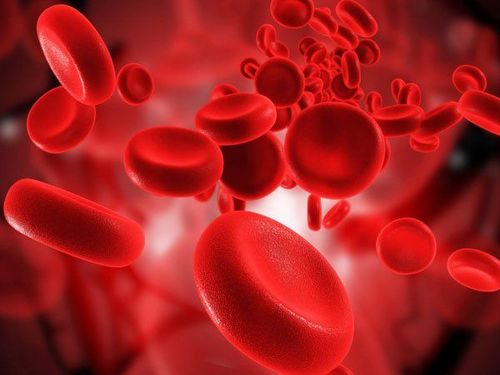
Khối hồng cầu rửa là khối hồng cầu được loại bỏ huyết tương bằng cách rửa nhiều lần
The percentage of hematocrit in the leukocyte-filtering red blood cell mass is between 50 and 70%. In addition, the white blood cell count is absent or less than one million cells remain in each red blood cell mass unit.
2.5. Frozen RBCs Frozen RBCs are erythrocytes that are stored in a cryogenic environment at minus 60 degrees Celsius or below along with a glycerol-free frozen erythrocyte protective solution.
Because of the extremely harsh storage environment, before being transfused to the patient, frozen red blood cells must be thawed, washed and removed the protective solution, diluted in physiological saline or supplemented with saline. add red blood cell preservation solution.
However, the freezing medium greatly increases the storage time of red blood cells. Shelf life is 10 years when storing red blood cells with 40% glycerol solution at temperatures from minus 80 degrees Celsius to minus 60 degrees Celsius. However, if thawed, the shelf life is only 14 days from the date of delivery. thaw. In addition, since thawing and washing of red blood cells to remove glycerol in an open system, the shelf life is not more than 24 hours if stored between 2 degrees C and 6 degrees C and no more than 6 hours if stored. at room temperature.
3. Platelet blood products
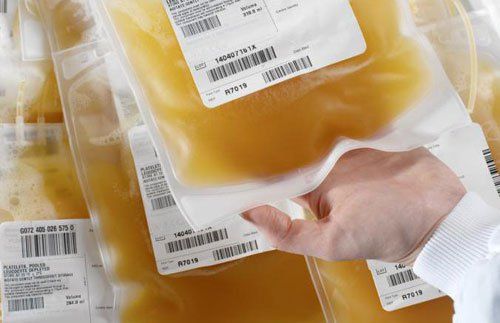
Có 3 loại chế phẩm từ máu dòng tiểu cầu
Because platelets are sticky, the recommended shelf life is no more than 5 days from the date of blood collection and the platelets are stored at a temperature between 20 degrees C and 24 degrees C with constant shaking. However, if prepared from whole blood units in an open system, the shelf life of platelets is not more than 06 hours from the end of preparation when stored at a temperature between 20 degrees Celsius and 24 degrees Celsius with shake continuously.
3.2. Decanted Platelet Blocks from Blood Donor Platelet Delimited Platelets are platelets collected directly from a blood donor by an automated cell separator. The remaining blood components will be returned to the patient's circulation right during the blood transfusion.
Compared with platelets prepared from whole blood units, the shelf life of platelets decanted from blood donors is similar, no more than 5 days from the date of platelet separation when stored at room temperature. from 20 degrees C to 24 degrees C, with continuous shaking.
3.3. Leukocyte Filtration Platelet Block Leukocyte Filtration Platelet Block is a platelet mass prepared from whole blood or by dialysis and leukocytes removed by a leukocyte filter.
Thus, the number of leukocytes in the leukocyte filtering platelets is very small, less than one million leukocytes per unit of platelets. Preservation and shelf life are similar to the two forms of platelet preparations as above.
4. Blood plasma products
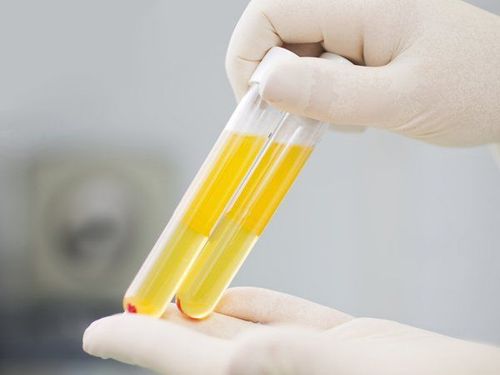
Huyết tương là phần dịch lỏng không chứa các tế bào máu, được điều chế từ đơn vị máu toàn phần hoặc lấy trực tiếp từ người hiến huyết tương bằng gạn tách
Shelf life of plasma and frozen plasma depends on the storage environment. When stored at minus 25 degrees Celsius (-25 degrees Celsius) or below, the shelf life of plasma will be up to 24 months from the time of blood collection or plasma separation. In contrast, if stored at a temperature between 2 degrees Celsius and 6 degrees Celsius, the shelf life of plasma is no more than 14 days from the time of preparation in a closed system and only 24 hours from the date of preparation. from the modulation time in the open system.
One thing to keep in mind is that fresh frozen plasma that has been thawed and reused should never be refrozen, as the components in the plasma will no longer be guaranteed.
4.2. Freezer The freezer is a preparation separated from the precipitate formed during the thawing of fresh frozen plasma at a temperature of 10 degrees Celsius or less. The freezer can be further purified and inactivated by chemicals or heat.
Each unit of cryoprecipitate is approximately 20 to 30ml containing coagulation factors VIII, fibrinogen and von Willebrand. Therefore, cryoprecipitate has a more specific indication for use than fresh frozen plasma.
Since this is a precipitation product during plasma thawing, it is important to clearly observe the contents of the container before deciding to transfuse. Only accepted when the blood bag has no abnormal color, no sediment, no clots.
The shelf life and usage of the freezer are similar to those of plasma and frozen plasma. Also, do not freeze after thawing.
5. Blood products from neutrophils
Neutrophils are decanted directly from blood donors or prepared from whole blood units stored at a temperature between 20 degrees Celsius and 24 degrees Celsius for no more than 24 hours from the time of blood collection.This is a platelet concentrate containing approximately 10 billion neutrophils per unit of preparation.
Contrary to platelets, storage conditions for neutrophils do not require shaking. Stored at a temperature between 20 degrees C and 24 degrees C, without shaking, neutrophils will be used within 06 hours from the time of preparation and within 24 hours from the time of blood collection.
In short, from a blood unit of an original donor, if the test results are accepted, this blood unit can be prepared, extracted into many different units, supporting the components. deficiency is different for each patient. Therefore, donating blood is a voluntary activity worth supporting and spreading in the community, in order to build an abundant blood bank and save more patients' lives.
Customers who need medical examination and treatment at Vinmec can go directly to the facilities of Vinmec Health System or contact to make an appointment HERE.
MORE:
Blood transfusion: When should it be done? Basic principles of blood transfusion The role of blood group determination before blood transfusion




